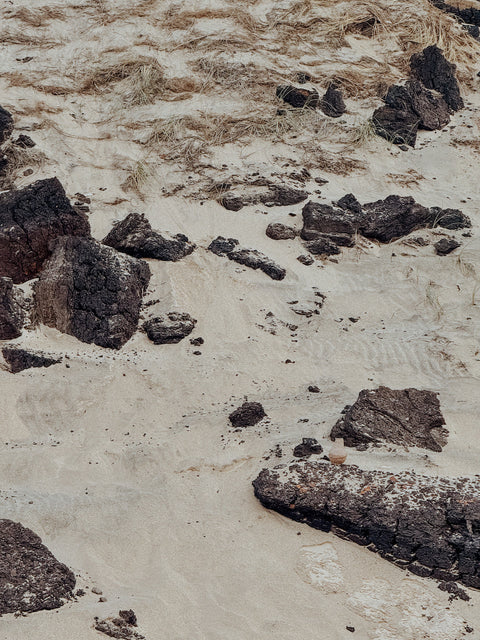
This is where I leave you
This blog post first appeared on my Substack newsletter, where I write about clay, ceramics, historical pots and the role of clay in our culture. Make sure to subscribe here.
----------
Artists have been flocking to Skagen, a small town in the north of Denmark, because of the light. Days are long here in the summer. The constant winds carry sand inland to shape the dunes, in a perpetual movement.
I sit on the white Scandinavian couch in a cottage a few steps from the beach and observe the green landscape. I spend time wondering about how it is that plants thrive on sand dunes. Everything here feels precarious and fleeting. The landscape keeps changing. Barely a few kilometers north, in Grenen, at the very top of Denmark, we can observe the sand reef growing and moving north east every year, towards Sweden. The northern most point of the country is not static.
It gets very hot in the cottage. The big windows let the light in and we wake up early. I observe how the bushes and trees bend. The roots of the beach rose outside my window twist as if reaching for land, for a more stable place. The plants - sand rose, sea thrift and sheep’s bit - have adapted to the harsh sandy and salty environment.

There is silence. The only sounds I hear are the wind sweeping and the repetitive ding of the Danish flag against the pole at the house across from us.
In 1910, Michael Ancher, one of the most prominent of the Skagen painters, the artists colony that emerged here in the 1880s, wrote about Skagen:
You arrived up there and wondered around an untouched and peculiar world. The noise of the world was like a distant whisper.
A few hours after our arrival, I understand what the artists saw. The blue hour is breathtaking: the sun sets at around 10 pm amidst a spectacle of pastel blue, pink and red. People travel to come see the sunset just outside our house.

On the last day here, I sit at one of the tables across from the big window overlooking the dunes and build a vase out of clay. It is raining but the light is still beautiful.
I start pinching the base and build the rest with coils. The vessel comes together quickly, aided by the fact that the clay’s moisture level is just perfect. I decide to leave the vase unfinished: I love the roughness of it. Whereas I would usually spend hours polishing, burnishing and trimming, I want this piece to reflect the environment it’s in.

In the evening, as I take my dog Calliope for a walk on the beach, I scratch a phrase under the vase with a piece of dried sea grass.
This is where I leave you.


I then place it atop the dunes, facing the North Sea. The terrain is not stable so I carefully climb upwards, steading myself on the rocks. Will someone see it? Will it be swept up by the wind? Water won’t reach it so, undisturbed, it will slowly decay and the clay will turn back to mud.

The elements have done wonders here already: the polished stones on the beach come from volcanic eruptions that occurred in Norway centuries ago. I learn more about them while visiting the small Natural History Museum in Skagen.
As I put down the vase, I think of the fossils that surround us, the ancient stones and the wind and currents sweeping them away.
This is where I leave you.
I am using this piece of ephemeral art to process the experience and think about the transiency of life. Appreciating the present is not a strength of mine. This visit comes at a time of change for me. The week after our return from this Danish holiday, I am scheduled for a surgery, the kind that doctors minimize. There is a me before this and a me after. I am saying goodbye to the person I was when I was here because, much like the landscapes shaped by the wind, we are always changing.
